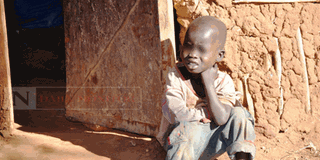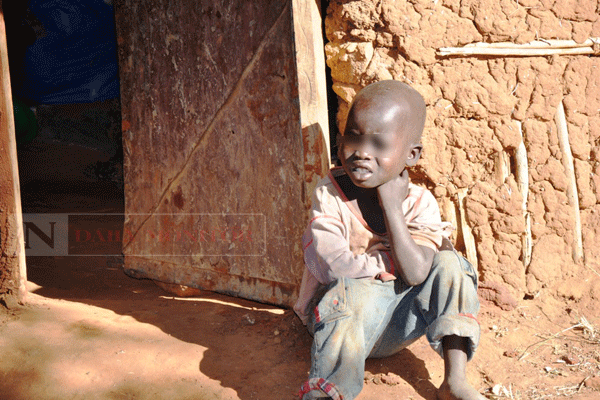Prime
Food insecurity, malnutrition in Karamoja worsens

A boy ponders while at a home in Kaboong District, Karamoja Sub-region on December 6, 2021. The area is faced with a hunger crisis.According to IPC, 518,000 people (over 40 percent of the population) in Karamoja Sub-region are facing high levels of food insecurity. PHOTO/STEVEN ARIONG
What you need to know:
- More than half of the population in Moroto District goes without any food for an entire day and night for at least three days a month
A new analysis from Integrated Food Security Phase Classification (IPC) indicates that more than half of the population in Moroto District goes without any food for an entire day and night for at least three days a month.
According to IPC, 518,000 people (over 40 percent of the population) in Karamoja Sub-region are facing high levels of food insecurity.
This is up from 361,000 people (30 percent) in 2021. Security in Karamoja predicts hard times for the region as thousands are to face starvation in Karamoja.
The IPC uses a scale of one to five to measure food insecurity. Of the 518,000 people with high levels of food insecurity, 428,000 are experiencing phase three (crisis levels of food insecurity) and 90,000 people are at phase four (emergency levels of food insecurity). For the first time in three years, all the nine districts of Karamoja: Kaabong, Moroto, Kotido, Napak, Nabilatuk, Amudat, Karenga, Abim and Nakapiripit are at crisis level or worse.
Mr Abdirahman Meygag, the World Food Programme Uganda representative, said: “The situation in Karamoja is an example of how a perfect storm of climate change, conflict, rising food costs, the impact of Covid-19 and limited resources is increasing the number of hungry people.”
High food prices have left many families unable to afford nutritious foods, forcing them to find other ways to cope.
Some families have been forced to consume their seed stocks, leaving nothing for the planting season.
Others have had to borrow money or reduce expenditure on necessities such as education and health. Delayed and unpredictable rainfall and diseases such as Covid-19 and malaria have further deepened the crisis, IPC indicates in the analysis.
The government and United Nations call for more funding to urgently stem the perfect storm of rising food prices, unpredictable rainfall and limited resources.
“We urgently need more funding to respond to the immediate and long-term needs of thousands of vulnerable people in Karamoja,” Mr Meygag said.
Karamoja is one of the poorest regions in Uganda with a poverty rate of 66 percent more than three times the national poverty rate.
Ms Esther Anyakun, the Minister of State for Relief, Disaster Preparedness and Refugees, said government is determined not to leave anyone behind on the journey to zero hunger.
“The National Development Plan III has a clear roadmap for including places that are lagging behind because of shocks and other factors, including Karamoja. Our appeal is for donors to support the government with resources to respond to the emergency and long term needs of Karamoja,” she said.
The IPC acute malnutrition analysis also indicates that 91,600 children and 9,500 pregnant or breastfeeding women are acutely malnourished and in urgent need of treatment.
Mr Munir Safieldin, the Unicef representative to Uganda, said the ongoing drought in the Horn of Africa has affected Karamoja, especially children.
“The lives of thousands of children are at stake. Acute malnutrition can be treated and prevented, but we need urgent action and support. We must not wait for thousands of children to die. We have said never again too many times. We need long term and predictable funding to help these children and their families,” Mr Safieldin said.





